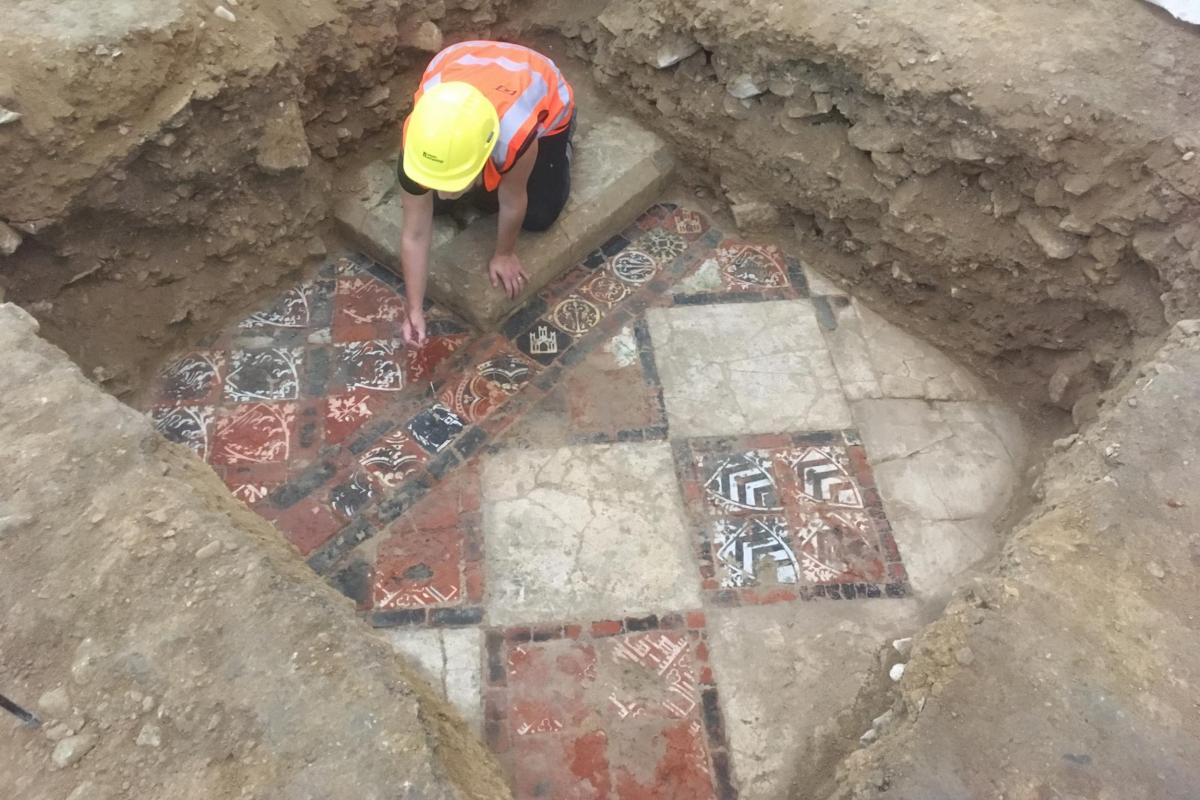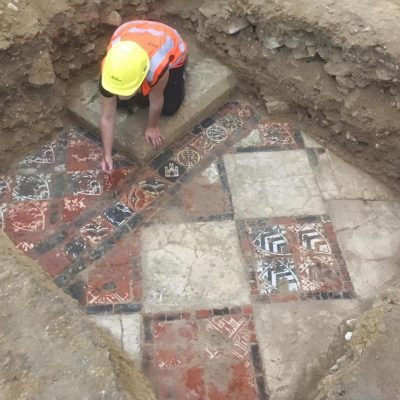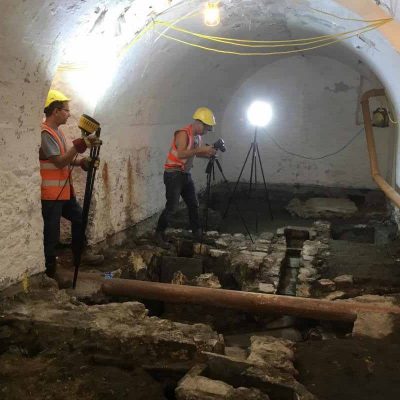

The Bath Abbey Footprint Project was a 23 month project with 6 months still remaining. Wessex Archaeology have looked at south of the Abbey, but most of the work has been underground. There are 6,000 burials in the abbey with dreadful voids in the floor, as it is patched up. The Abbey had funding from the Heritage Lottery Fund to repair the floor and replace the Victorian heating system with one, more eco-friendly, using Bath’s hot springs. All the buildings are listed and have had historic building recording.
Inside the Abbey are three phases. South of the Abbey is a warren of underground vaults and Wessex had to work with building contractors. The archaeology outside went down to the Medieval level. The vaults were challenging. There was evidence for Mesolithic flint at a depth of 4.5m below street level. The Medieval horizon is 2m and Post Roman was dark earth. Excavation was very close to the Roman Baths (2-4th Century AD). A Romano-British road of gravel was the principal road into the town and running north-south was another. There was a free standing wall, but not constructed so well as the Baths. Little buildings were Romano-British with a tessellated floor.
Late Saxon stonework was discovered close to the Abbey, dated AD675-1066. An Anglo-Saxon monastery is thought to have been established on the site by the late 7th Century. A late Saxon burial ground was found above the Roman level, but below the Medieval level. It was a monastic cemetery, densely packed with 27 stacked burials. Burial was denser closer to the Abbey. There are charcoal burials, where the body is laid on or under a layer of charcoal, to protect it. There were also cushion-stone burials. The burials include monks, nuns and children and it appears that all the inhabitants of Bath were being buried there. Buildings constructed against a Roman wall appear to respect it.
An apse was discovered south of the late Saxon church with 1m wide walls – a substantial building with smooth steps. Dated to AD670-770; AD780-970. Oak charcoal in the wall could be AD780 or later. There were also religious buildings c. 3m wide internally. Saxon monastic sites could be seen as a scatter of buildings that were ancillary chapels.
In AD1090 the Norman Cathedral was built with a new Bishop (John of Tours) as the Bishop of Bath and Wells. The cathedral was completed c. 12th Century. It is a footprint under the present Abbey as it has Norman column bases in the present Abbey; a lot of Norman stonework. The Norman cathedral is dated to AD1090 – 1166. It had been used as a foundation for the present Abbey. South of the Abbey are huge robber trenches and a pier base. It can be compared with the late 11th Century St. Sernin, Toulouse. Norman buildings were based on the St. Sernin basilica design. Encaustic tiles on the floor were intact.
Finds from the late Medieval period include tiles and a carved head. South of the Abbey are 12th Century cloisters. Burials had been cut into the Bath stone coffins and there are a lot of charnel pits. One had 46 skulls dated AD920-1020. People were digging holes and re-burying the bones. By the turn of the 17th Century the Abbey was open to the sky; in 1613 the ceiling was found broken on the floor.
The Post Medieval period had 6 in situ burials, lead coffins. All were recorded and the skeletons re-buried. There was also coffin furniture. By the 17th Century the Abbey was cushioned by houses which were later knocked down. At 1-2 Kingston Buildings a 1760s W.C. was discovered that was unusually a flush toilet. From the drains came pottery bowls (blue and white) with people’s names on them. One said Simpson from Simpson’s Rooms; another Millington. There were fruit pips and a double-ended tooth brush. The toothbrush was not common and indicated high status. A dentist named George Ruspini, who had a practice there, was dentist to King George. The encaustic tiles were made in Wiltshire and have parallels with other Abbeys.


Encaustic tiles and excavation by Wessex Archaeology (Images Wessex Archaeology)
